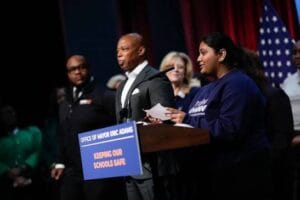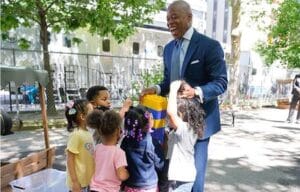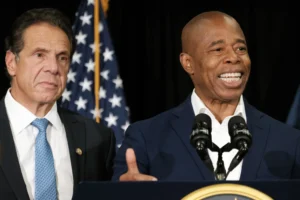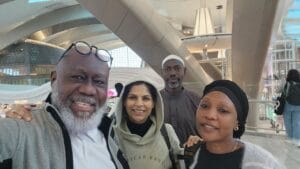EDUPEACE| Industry 2.0 versus Education 2.0

Prof. Mahfouz A. Adedimeji
It was the Greek Philosopher of the 5th Century, Heraclitus, who once examined the concept of change and posited: everything flows and nothing stays. He further reflected and concluded that “you can’t step into the same river twice” as “nothing endures but change” in life. In this respect, the world has not remained static and the gains of the First Industrial Revolution or Industry 1.0 led to the changes that heralded the Second Industrial Revolution or Industry 2.0. The transition to Industry 2.0 did not leave education unaffected because change is constant.
What is Industry 2.0 and what exactly is Education 2.0?
Industry 2.0
While the development of simple machines and sundry improvisations engendered the commencement of Industry 1.0, it was the discovery of electricity that propelled the beginning of Industry 2.0. Ten years after publishing his work on electromagnetic rotation, which is the principle behind the electric motor, the English scientist, Michael Faraday, discovered electromagnetic induction, the principle behind the electric transformer and generator in 1831. The 1831 discovery was significant as it allowed electricity to be translated from mere scientific curiosity to a compelling reality and a powerful new technology. Faraday realized that electricity could be produced mechanically and his method was applied to machinery and transportation.
As this watershed marked the start of Industry 2.0, the 19th Century marked the beginning of mass production, in the true sense of the term, especially as the first electricity powered assembly line was built in slaughterhouses in 1870.
The cycle of electrification started in effect and it has remained a primary source of power in many sectors since the beginning of the 20th Century. Electrification allowed businesses to use power sources to operate machines and this made them more efficient and portable, compared to the use of water and steam. In due course, electricity would be used to replace steam power in factories as it was found to be more cost-efficient, among other advantages. With electricity came the invention of electronic gadgets.
This period was also the time that the renowned American mechanical engineer, Frederick Taylor, who introduced workplace methods to boost productivity and upscale work in terms of industrial engineering and production management, came to the scene. Besides, Henry Ford (1863-1947) further refined the way through which manufacturers could improve their quality and output by applying manufacturing principles, hence developing the assembly line technique of mass production. Ford revolutionized transportation and his impact on the American industry impacted immensely on the 20th century landscape through his Ford Motor Company.
Education 2.0
With the changes that began to happen in the way of doing things in the world, educators in this era started to question themselves about the appropriateness of their instructivist approach to learning. They realized that the approach, which characterized Education 1.0, is not effective and that the best way for students to learn is to gain life experience.
Therefore, there was a shift to promote interactivity through which learners were encouraged to interact with one another and gain. In other words, instructivism gave way to constructivism cum progressivism and the notion of a teacher being “the sage on the sage” gave way to his being just “a guide by the side” of the learner, an orchestrator. Here educators facilitate learning and students interact better to achieve more interesting learning and classroom experiences.
With the development of technology, the classroom (brick) is no longer limited to a building but it is also online (click), with Computer-Assisted Instruction (CAI) becoming entrenched.
This education is characterized by social networking, Project and Inquiry-based Learning (PBL), assessing global learning and the adoption of collaborative interactive web tools. This is the type of education that allows more interactions through which students solve their own problems by engaging in activities consisting of four Cs: Communicating, Contributing, Collaborating and Co-creating.
Communication is a crucial component of Education 2.0 as teachers engage the listening, speaking, reading, writing and reasoning skills of the learners. Presentation platforms such as video and Microsoft Powerpoint are used to support communicating the course content. With effective communication comes contribution as students also enrich their classes with their own ideas and information. As they work closely together along with their teachers, who are in the real sense facilitators or orchestrators, the teaching-learning environment is enriched with contributions informed by students’ own research.
Where there are communication and contribution, collaboration is facilitated. Collaboration is important because in the real world of work, one does not work alone. One has to work with other team members to achieve results and it is important that students know how to address problems, pitch solutions and decide the best course of actions.
Collaboration also helps to make students appreciate the value of diversity and the fact that differences of views and opinions are normal as a single person does have all the solutions. Collaboration then makes co-creation possible as students themselves become active participants in co-creating what they learn and how they learn.
In essence, the adoption of technologies enhances education in this era and the learning structure applies the principles of active, experiential, authentic, relevant and socially networked learning experiences.
All these “result in open education resources and open access distributed content platforms like wikis, personal websites, blogs and social media platforms which lead to collaboration, social learning as well as co-creation of knowledge, artefacts, personal reflection, sharing of personalized learning and curation of knowledge” in the words S.T. Tan, D. Al-Jumeily, J. Mustafina, A. Hassan, A. Broderick and A. Forsyth, authors of “Rethinking our Education to Face the New Industry Era”.
Trump’s Comeuppance
The story is told of a fowl that swallowed a diamond in a large poultry. The owner asked a man to determine the particular fowl and kill it in order to retrieve his precious stone. When the man arrived at the poultry, there were hundreds of fowls there but one was sitting at a corner, away from others. He killed that particular fowl and it happened to be the one that swallowed the diamond.
Amazed, the poultry owner asked the man, “How did you know it was that fowl that swallowed the diamond?” The man responded, “Very easy. When idiots get rich, they become puffed up and dissociate themselves from others.”
Since his election four years ago, the outgoing American President, Donald Trump, has alienated himself not only from Americans but also the rest of the world. However, in spite of his immense capacity for hubris, no one would have imagined that he could descend as low as to aid and abet the unprecedented attack on the American symbol of democracy, the Congress, by his mob that descended on the Capitol. It was one assault too many on democracy and a desecration of constitutionalism last Wednesday, January 6, in the full glare of the shocked world.
I think Americans have indulged Trump too much and there is a need to make him reflect. He deserves the impeachment being cooked against him by the Democrats and the suspension by the social media giants. There was no justification whatsoever for the havoc wreaked on Congress by Trump supporters and the resultant killing of four persons.
While the American home-front is volatile, the Trump Administration is still ratcheting up its rhetoric at the international scene making unsubstantiated allegations against Iran, with the implication of making the country a target of another attack.
The Administration is also designating new terrorist organizations at a time it should be winding down, not creating unnecessary bubbles all over the place at a time it should be promoting peace.
For all his hubris, President Trump’s comeuppance is evident in making the Republican Party lose the Presidency, the Senate and the House. He also cost America her image in the world and it would take another President to restore the reputation of the country and truly make America great again!











